《Spectroscopy and Molecular Srtucture》
| 作者 | Gerald W.King 编者 |
|---|---|
| 出版 | 未查询到或未知 |
| 参考页数 | 482 |
| 出版时间 | 没有确切时间的资料 目录预览 |
| ISBN号 | 无 — 求助条款 |
| PDF编号 | 811330688(仅供预览,未存储实际文件) |
| 求助格式 | 扫描PDF(若分多册发行,每次仅能受理1册) |
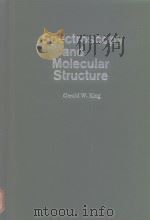
CHAPTER 1.THE TECHNIQUES OF SPECTRO-SCOPY1
The Historical Background1
The Electromagnetic Spectrum2
Spectro-scopic Instruments3
Prism Spectrometers6
Diffraction Gratings7
RADIATION SOURCES9
Emission Sources9
Absorption Spectroscopy11
Line and Band Spectra13
Radicals and Polyatomic Ions14
CHAPTER 2.WAVE MECHANICS AND THE HYDROGEN ATOM17
THE QUANTIZATION OF ENERGY17
Black-body Radiation17
The Photoelectric Effect19
The Heat Capacities of Solids20
The Spectrum of Atomic Hydrogen21
THE BOHR-SOMMERFELD ATOMIC THEORY23
Bohr’s Atomic Model for Hydrogen23
Sommerfeld’s Extension of the Bohr Atomic Model27
Excitation Potentials29
Shortcomings of the Bohr-Sommerfeld Theory30
ELECTRONS AND WAVE MOTIONS30
De Broglie’s Wave Equation for Electrons30
Electron Diffraction31
Standing and Progressive Waves32
The Uncertainty Principle33
Wave Equations34
HYDROGEN AND HYDROGENLIKE ATOMS37
The Wave Equation for Hydrogenlike Atoms37
The Angular Eigenfunctions38
The Radial Eigenfunctions40
The Atomic Wave Functions42
QUANTUM MECHANICS45
Fundamental Postulates45
The Vector Model for Atoms49
The Variation Principle51
The Perturbation Method53
Degenerate States55
Basis Functions and Mean Energies56
Electron Spin57
TransitionProbabilities58
Fluorescence and Phosphorescence60
CHAPTER 3.POLYELECTRONIC ATOMS63
THE ELEMENTS OF ATOMIC STRUCTURE63
One-Electron Wave Functions63
The Pauli Exclusion Principle66
The Electronic Configurations of the Elements67
The Angular Momenta of Atoms70
Spin-Orbit Interaction74
THE ALKALI METALS77
Spectral Terms of the Alkali Metals77
Multiplet Structure80
THE HELIUM ATOM81
Spectral Terms of the Helium Atom81
Wave Mechanics of the Helium Atom82
Fine Structure in the Spectra of Heliumlike Atoms86
THE SPECTRA OF COMPLEX ATOMS AND IONS87
Terms of Complex Atoms87
Selection Rules and Transitions90
Auto-ionization(Auger Process)92
Calculation of the Energies of Complex Atoms93
ATOMS IN EXTERNAL FIELDS94
The Normal Zeeman Effect94
Larmor Precession97
The Anomalous Zeeman Effect99
The Paschen-Back Effect101
The Stark Effect103
NUCLEAR EFFECTS IN ATOMIC SPECTRA104
Hyperfme Structure104
Isotope Effects104
Nuclear Magnetic Moments105
The Nuclear Zeeman Effect107
CHAPTER 4.THE STRUCTURES OF DIATOMIC MOLECULES113
The Born-Oppenheimer Approximation113
THE VECTOR MODEL FOR DIATOMIC MOLECULES116
Classification of Electronic States116
Electron Spin119
The Separated-Atom Approximation121
The United-Atom Approximation125
Correlation of Electron Orbitals128
Electron Configurations of Diatomic Molecules130
THE METHOD OF MOLECULAR ORBITALS132
The LCAO/MO Approximation132
The Hydrogen Molecule-Ion133
Bonding in the H2+ Ion136
Molecular Orbital Wave Functions for the Hydrogen Molecule140
Valence Bond Wave Functions for the Hydrogen Molecule143
Improved Trial Wave Functions for the Hydrogen Mole-cule144
Configuration Interaction145
WAVE FUNCTIONS FOR COMPLEX DIATOMIC MOLECULES146
LCAO/MO Wave Functions146
CHAPTER 5.THE ROTATION AND VIBRATION OF DIATOMIC MOLECULES151
Nuclear Motion151
The Rigid Rotator153
The Harmonic Oscillator155
The Spectrum of the Harmonic Oscillator159
The Anharmonic Oscillator160
Potentional Energy Functions164
The Spectrum of the Anharmonic Oscillator168
THE VIBRATING ROTATOR170
Rotational States170
Rotation-Vibration Spectra173
THE SYMMETRY OF MOLECULAR WAVE FUNCTIONS175
Symmetry Transformations175
Homonuclear Molecules178
Intensity Distribution in Rotational Structure179
Nuclear Statistical Weights182
Ortho and Para States186
THE RAMAN EFFECT187
The Scattering of Light187
Experimental Raman Spectroscopy188
Classical Theory190
Quantum Theory192
CHAPTER 6.ELECTRONIC TRANSITIONS IN DIATOMIC MOLECULES197
Electronic Band Spectra197
Rotational and Electro?ic Interactions199
Case(a)Coupling201
Case(b)Coupling203
Case(c)Coupling205
Case(d)Coupling206
A-Type Doubling208
Spin Uncoupling211
The Symmetry Classifications of Rotational Levels214
Statistical Weights216
Selection Rules220
Singlet-Singlet Transitions223
Multiplet-Multiplet Transitions226
THE VIBRATIONAL STRUCTURE OF ELECTRONIC TRANSITIONS227
Band Progressions and Sequences227
Transition Moments and Intensity Distributions232
The Franck-Condon Principle233
Electronic Band Spectra in Absorption237
Perturbation Theory of Interactions239
Spectroscopic Perturbations241
Continuous Spectra and Predissociation245
CHAPTER 7.THE SYMMETRIES OF POLYATOMIC MOLECULES249
INTRODUCTORY GROUP THEORY249
Symmetry Operations249
Symmetry Elements252
Groups255
Point Groups258
REPRESENTATIONS OF GROUPS263
Group Algebra263
The C3 Point Group265
The C3v Point Group268
Character Tables270
APPLICATION OF GROUP THEORY272
Nuclear Coordinate Transformations272
Translations,Rotations,and Vibrations274
Electronic States of Molecules275
Direct Product Representations278
Integrals over Configuration Space279
CHAPTER 8.THE ROTATIONS OF POLYATOMIC MOLECULES283
Nuclear Motion283
Principal Axes285
Rotational Energy Levels287
LINEAR MOLECULES289
Rotational States289
Rotational Spectra292
SYMMETRIC TOP MOLECULES294
Rotational States294
Symmetry and Statistical Weights296
Rotational Spectra302
SPHERICAL TOP MOLECULES303
Rotational States303
ASYMMETRIC TOP MOLECULES304
Rotational States304
Symmetry and Statistical Weights309
Rotational Spectra312
CHAPTER 9.THE VIBRATIONS OF POLYATOMIC MOLECULES315
Vibrational Motion315
Motion in Cartesian Coordinates316
Example;Vibrations of a Linear Molecule AB2322
Matrix Formulation324
Motion in Generalized Coordinates326
Motion in Normal Coordinates327
Motion in Internal Coordinates329
GROUP THEORY AND MOLECULAR VIBRATIONS332
Symmetry Operations on Displacement Coordinates332
The Symmetries of Normal Vibrations333
Representations in Cartesian Coordinates335
Motion in Symmetry Coordinates338
QUANTIZED VIBRATIONAL MOTION339
Vibrational Eigenstates and Eigenfunctions339
The Symmetry of VibrationalWave Functions341
Vibrational Angular Momentum346
Perturbations348
Vibrational Spectra and Selection Rules352
Inversion Doubling357
VIBRATIONAL RAMAN SPECTRA361
Polarizability361
Selection Rules362
The Mutual Exclusion Rule366
THE ROTATIONAL STRUCTURE OF INFRARED BANDS367
Rotation-Vibration Spectra367
CHAPTER 10.THE ELECTRONIC SPECTROSCOPY OF POLYATOMIC MOLECULES377
Electronic States of Polyatomie Molecules377
LCAO/MO’s for Polyatomic Molecules380
Orbital and Ionization Energies383
Equivalent Molecular Orbitals387
Localized Molecular Orbitals390
Hybrid Atomic Orbitals392
Aromatic Molecules396
ELECTRONIC BAND SPECTRA402
Electronic and Vibrational Terms402
Electronic and Vibronic Transitions402
Electronic and Vibronic Selection Rules404
Vibrational-Electronic Interactions405
The Jahn-Teller Effect410
The Renner Effect412
MO Correlation Diagrams418
Walsh’s Rules420
Chromo-phores and Group Absorption424
n→π* Transitions424
π→π* Transitions431
Crystal Field Theory437
APPENDIX Ⅰ.OPERATORS452
EIGENFUNCTIONS OF COMMUTING OPERATORS453
APPENDIX Ⅱ.SELECTION RULES454
APPENDIX Ⅲ.CHARACTER TABLES FOR SELECTED POINT GROUPS461
APPENDIX Ⅳ.PHYSICAL CONSTANTS AND CONVERSION FACTORS465
AUTHOR INDEX466
SUBJECT INDEX468
《Spectroscopy and Molecular Srtucture》由于是年代较久的资料都绝版了,几乎不可能购买到实物。如果大家为了学习确实需要,可向博主求助其电子版PDF文件。对合法合规的求助,我会当即受理并将下载地址发送给你。
高度相关资料
-

- ACRONYMS AND ABBREVIATIONS IN MOLECULAR SPECTROSCOPY AN ENZYCLOPEDIC DICTIONARY
- 1990 SPRINGER-VERLAG
-
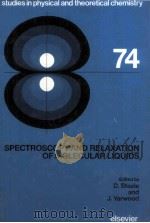
- STUDIES IN PHYSICAL AND THEORETICAL CHEMISTRY 74 SPECTROSCOPY AND RELAXATION OF MOLECULAR LIQUIDS
- 1991 ELSEVIER SCIENCE PUBLISHING COMPANY INC.
-
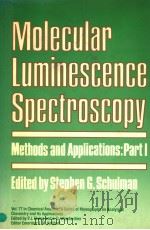
- MOLECULAR LUMINESCENCE SPECTROSCOPY METHODS AND APPLICATIONS:PART 1
- 1985年 A WILEY-INTERSCIENCE PUBLICATION
-
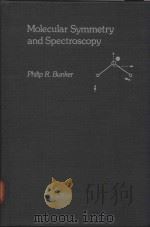
- MOLECULAR SYMMETRY AND SPECTROSCOPY
- 1979 ACADEMIC PRESS
-
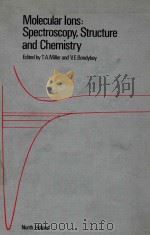
- MOLECULAR LONS SPECTROSCOPY STRUCTURE AND CHEMISTRY
- 1983 NORTH HOLLAND PUBLISHING COMPANY
-

- ADVANCED IN MOLECULAR SPECTROSCOPY VOUME 2
- 1962 THE MACMILLAN COMPANY
-

- INTRODUCTION TO THE THEORY OF MOLECULAR VIBRATIONS AND VIBRATIONAL SPECTROSCOPY
- 1972 OXFORD . AT THE CLARENDON PRESS
-

- ADVANCES IN MOLECULAR SPECTROSCOPY VOLUME 3
- 1962 THE MACMILLAN COMPANY
-

- Molecular spectroscopy first edition
- 1999 Prentice Hall
-

- SPRINGER SERIES IN CHEMICAL PHYSICS 50 MOLECULAR AND LASER SPECTROSCOPY
- 1991 SPRINGER-VERLAG BERLIN HEIDELBERG NEW YORK LONDON PARIS
提示:百度云已更名为百度网盘(百度盘),天翼云盘、微盘下载地址……暂未提供。➥ PDF文字可复制化或转WORD




